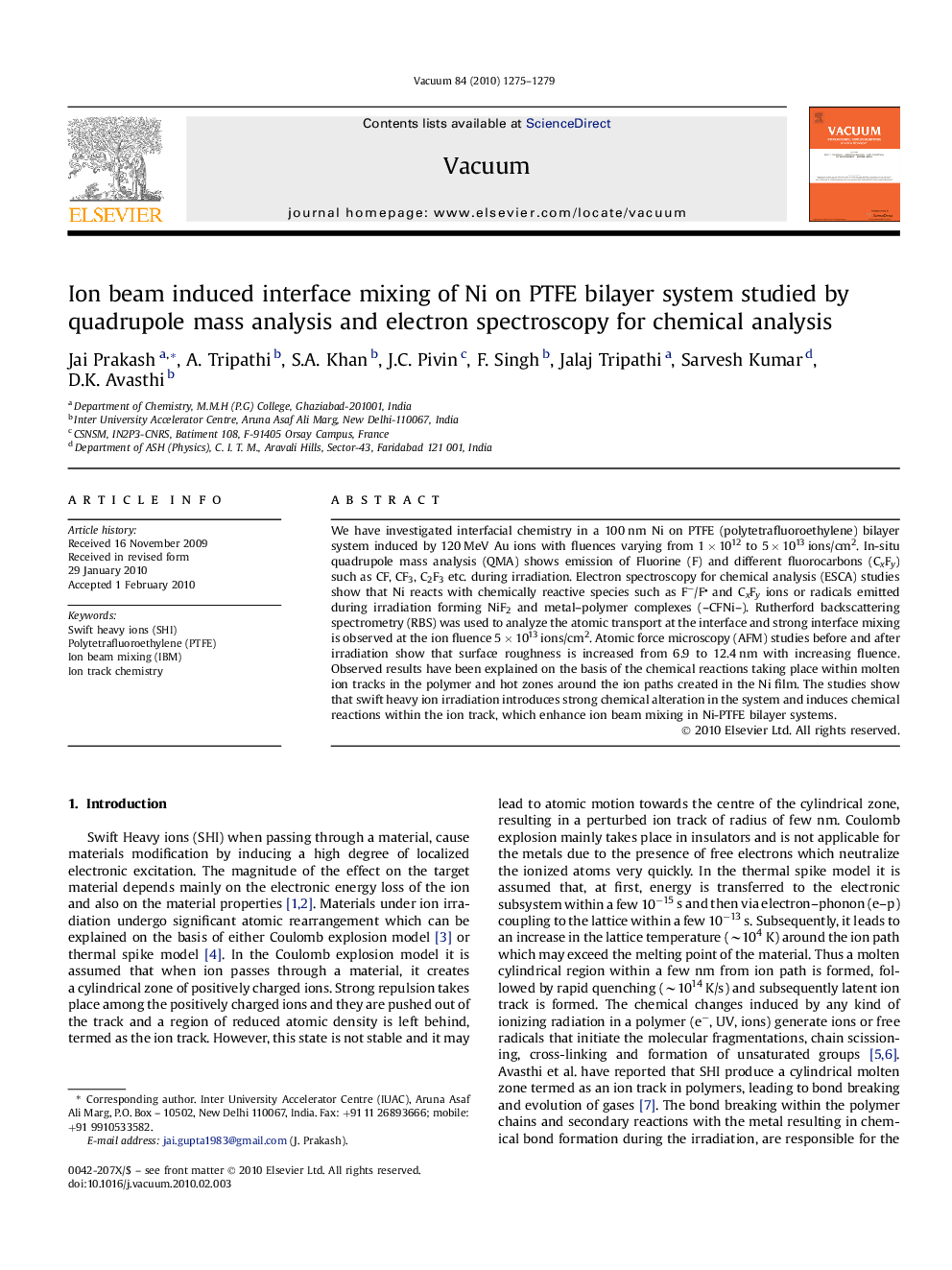| Article ID | Journal | Published Year | Pages | File Type |
|---|---|---|---|---|
| 1689008 | Vacuum | 2010 | 5 Pages |
We have investigated interfacial chemistry in a 100 nm Ni on PTFE (polytetrafluoroethylene) bilayer system induced by 120 MeV Au ions with fluences varying from 1 × 1012 to 5 × 1013 ions/cm2. In-situ quadrupole mass analysis (QMA) shows emission of Fluorine (F) and different fluorocarbons (CxFy) such as CF, CF3, C2F3 etc. during irradiation. Electron spectroscopy for chemical analysis (ESCA) studies show that Ni reacts with chemically reactive species such as F−/F and CxFy ions or radicals emitted during irradiation forming NiF2 and metal–polymer complexes (–CFNi–). Rutherford backscattering spectrometry (RBS) was used to analyze the atomic transport at the interface and strong interface mixing is observed at the ion fluence 5 × 1013 ions/cm2. Atomic force microscopy (AFM) studies before and after irradiation show that surface roughness is increased from 6.9 to 12.4 nm with increasing fluence. Observed results have been explained on the basis of the chemical reactions taking place within molten ion tracks in the polymer and hot zones around the ion paths created in the Ni film. The studies show that swift heavy ion irradiation introduces strong chemical alteration in the system and induces chemical reactions within the ion track, which enhance ion beam mixing in Ni-PTFE bilayer systems.
